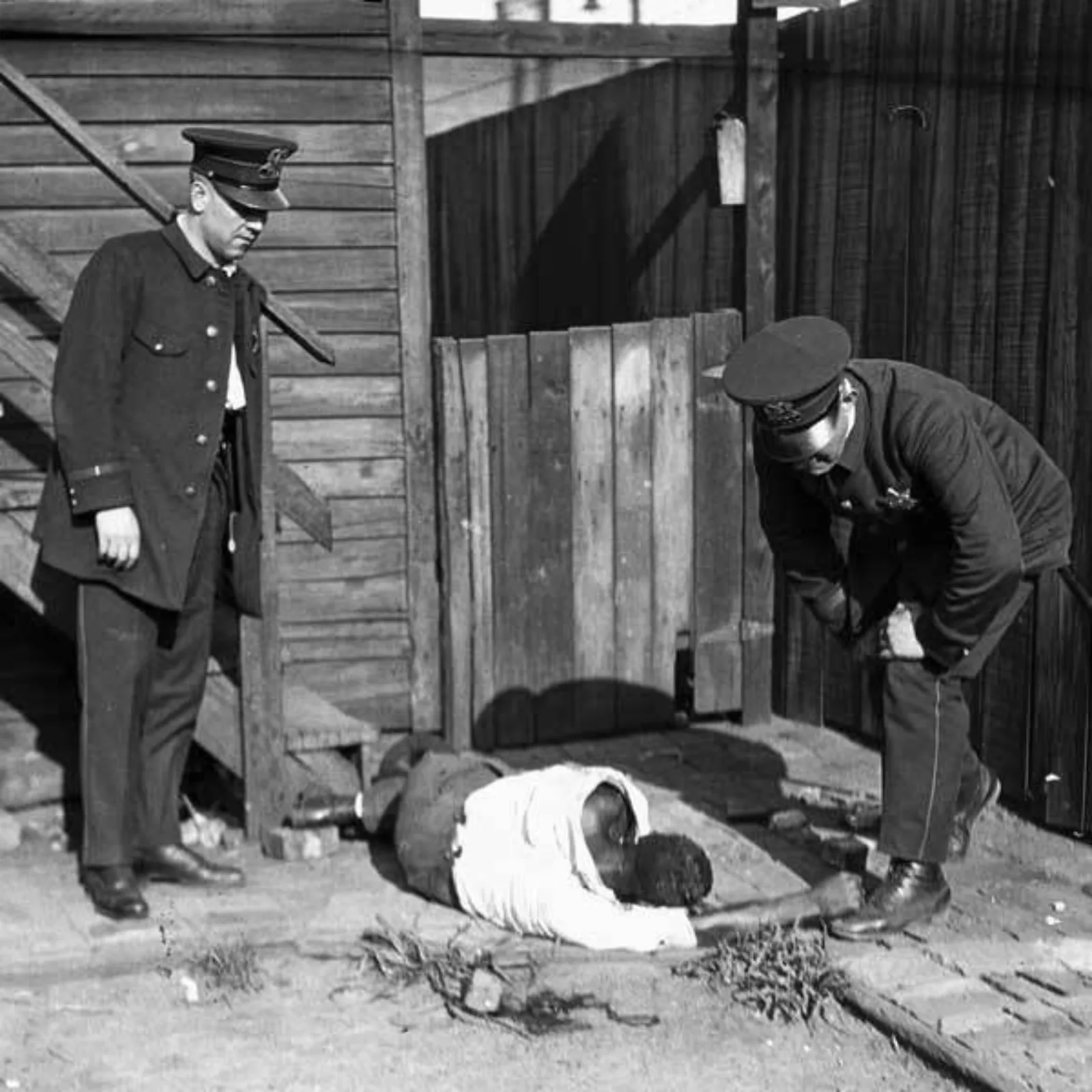In 1919, what role did police play in calming the riots, or fueling them? How did various communities view the police in 1919? What has changed today?
Join us for a conversation about law enforcement and the nature of racial violence from 1919 to the present. Participants will engage with historic news articles from the Chicago Defender and the Chicago Tribune, as well as more recent accounts of violence in Chicago.
Schedule
- 6:00 pm Pre-program activities, Guild Gallery
- Chicago History Museum archival materials on disply with CHM archivists Julie Wroblewski and Hannah Zuber, along with GHM librarians Gretchen Neidhardt, Lesley Martin, and Elizabeth McKinley.
- Red Summer of 1919 Photo Essay, with CHM assistant curator Julius L. Jones
- 7:00 pm Program begins, Robert R. McCormick Theater
- Welcome: Charles E. Bethea, Andrew W. Mellon director of collections and curatorial affairs, Chicago History Museum
- Moderated panel discusstion, followed by Q&A
- 8:10 pm Reception and Conversation Circles, facilitated by CHM staff, Cafe, Guild Room, and the Chicago Authored Gallery
- Discussion prompts
- In one sentence, which of the conversations among the panelists resonated with you the most? why?
- Black Studies scholar Keeanga-Yamahtaa Taylor writes" ... There has never been no 'golden age' of policing in which violence and racism were not central to the job." Which begs the question: What is the purpose of police?
- Looking at Chicago's Gang Database, what are the assumptions that go into the process of collecting, interpreting and acting on data?
- In regards to the Chicago Police Department, What does restorative justice look like in the City of Chicago?
- What are possible alternatives to a policing system?
- Discussion prompts
Chicago 1919: Confronting the Race Riots
Visit this page for a complete list of Chicago 1919 public programs.
This event is part of the Newberry's year-long initiative, Chicago 1919: Confronting the Race Riots. It has been made possible in part by a major grant from the National Endowment for the Humanities: Exploring the human endeavor, and by generous support from Edith Rasmussen Ahern and Patrick Ahern. Our Youth Engagement Sponsor is Allstate.
Collaborative partners in Chicago 1919 include the Black Chicago History Forum, Black Metropolis Research Consortium, Blackstone Bicycle Works, Chicago Architectural Club, Chicago Collection Consortium, Chicago History Museum, Chicago Public Library, Chicago Urban League, City Bureau, Kartemquim Films, Middle Passage Production, and Young Chicago Authors.
Chicago 1919: Confronting the Race Riots received the 2020 Outstanding Public History Project Award from the National Council on Public History.
Speakers
Lee Bey is an architectural critic, photographer, and writer.
Dr. Tanesha D. House is an organizational change consultant.
Brad Hunt, a historian of housing in Chicago, is Vice President of Research and Academic Programs at the Newberry Library.
Support the Newberry
Your generosity is vital in keeping the library’s programs, exhibitions, and reading rooms free and accessible to everyone.
Past Public Programs
Check out video recordings of past Newberry public programs on our YouTube channel.
